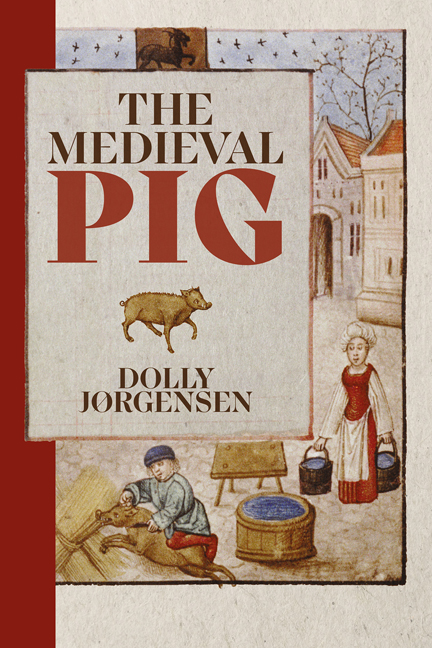1 - Placing the Medieval Pig
Published online by Cambridge University Press: 11 May 2024
Summary
The pig was a commonplace animal in the Middle Ages and, like many commonplace animals, the medieval pig embodies paradoxes. The pig was a major food source in winter, yet pork was a food that carried the connotation of religious uncleanliness. The omnivorous pig was useful as a garbage recycler, but was also a dangerous eater who could steal food and even root up buried corpses. Some pigs were domesticated, while others ran freely through the woodlands. The pig larder was a blessing, but pigs were also believed to do the Devil's bidding. As art historian Michael Camille observed, ‘pigs were both celebrated and reviled in medieval culture’. This book will explore these paradoxes of the pig in medieval culture and practice as we journey together to the places the pig inhabited.
Human lives are, and have been, deeply entangled with animal lives. Humans have sought wild animals for meat, skins, and a myriad of other products – from beaver castoreum to whale ambergris – as long as humans have existed. Wild animals, from lions to kangaroos to bats, shape human culture through symbolism and social practices that incorporate them. Both livestock and pets are brought directly under human control, often living under the same roofs as people and dependent on them for food and care. Humans began domesticating livestock mammals such as goats, sheep, pigs, and cattle over 10,000 years ago; dogs were domesticated even earlier. In the domestication process, the genetic makeup of the animals was modified as humans bred them for economically advantageous traits (more milk production, better wool fibres, more strength, better stamina, etc.) and human cultural contexts were modified to accommodate the animals’ needs and wants. This closeness to animals is both physical and mental – as humans have interacted with animals, we have thought with and through them. In a book about animals, looking at animals involves looking at both them and ourselves.
This book looks at human–animal relations through one animal (the pig) in a particular time (the Middle Ages) in a particular geography (western Europe). Writing about pigs is nothing new. Scholars have written about Fascist Pigs, Capitalist Pigs, The Symbolic Pig, The English Pig, and Legions of Pigs. Even just The Pig.
- Type
- Chapter
- Information
- The Medieval Pig , pp. 1 - 11Publisher: Boydell & BrewerPrint publication year: 2024

